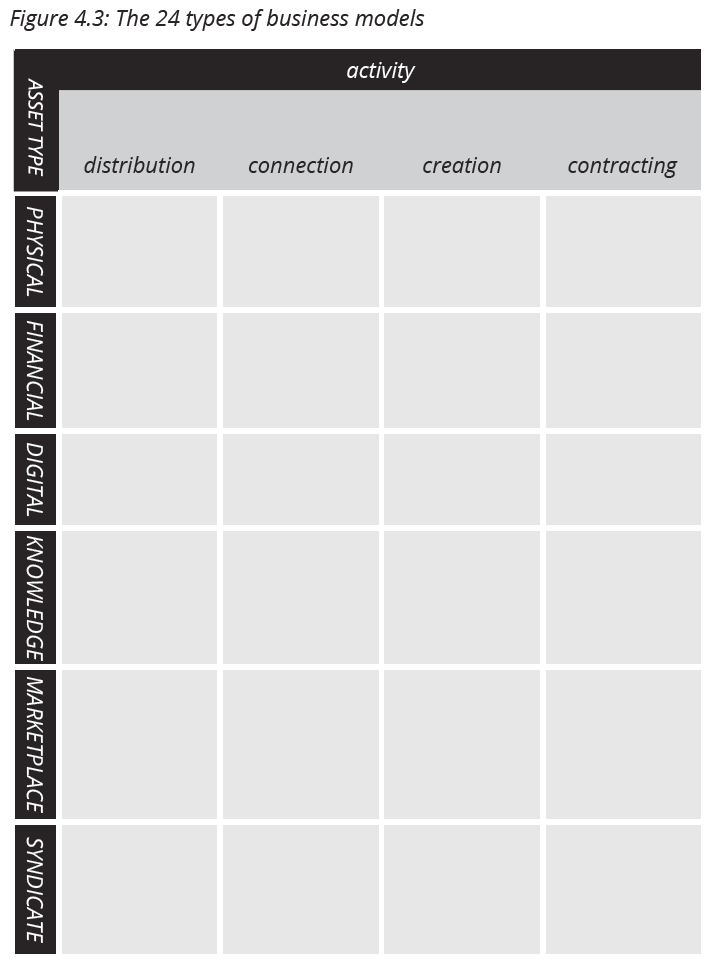There are 24 Business Models. Period.
Whether you are an Intrapreneur or an Entrepreneur, you frequently hear about the need to find, innovate, decide or shift your business model. But what does that mean? What does one look like?
Amazon, Netflix, Uber and Airbnb changed the prevailing business models in their industries – didn’t they?
What about Apple and Samsung – have they innovated their business models?
Arnott’s owns the biscuit category in Australia, how is their business model looking? What is their business model?
With Aldi gaining share and Amazon Go entering, what can Coles and Woolies do with their business models?
Big Four – how can they fight off Fintech with all those new business models on the horizon?
Fact is we know a different business model when we see it but it’s a bit hard to define and it certainly can be difficult to sit back and dream up a new one without a little help.
Each blank cell represents one of the 24 different Business Models. (excerpt from book Xcelerate, page 64)
To place your own business in this table or to consider alternatives ask these two questions:
What is my income generating ASSET?
What is my income generating activity?
Arnott’s sells biscuits that they invented. So their Business Model is PHYSICAL : creation
Coles and Woolies buy and on-sell those biscuits. No creation there, just distribution so their Business Model is PHYSICAL : distribution
The car insurance you might buy with your Tim Tams would be FINANCIAL : distribution, and the sparky fixing the refrigerator showcase is sporting a KNOWLEDGE : contracting biz model. The kids, bored in the aisles shopping with Mum or Dad, checking their Facebook feeds – benefit from FB’s SYNDICATE : connection biz model.
Here are the activity definitions:
distribution – an asset passes into ownership and is then sold to another party (without major alteration)
connection – the introduction of two or more parties, often a buyer and seller for them to interact directly. Choice of options is common
creation – value-add that is generated via combining inputs into a transformed finished product
contracting – temporary use of an owned/controlled asset is allowed/offered, after which it can often be retasked
Lets get back to Apple, Netflix and Amazon for a sec. (excerpt from book Xcelerate, page 82)
Here’s the cool thing. If you want to disrupt a market, if you want to turn a prevailing business model on its head, just pick a new box for your business model and see where it takes you. Put in Uber and Airbnb – supposedly the same sharing economy disruptive innovator business models….Nope, they don’t have the same business model. Airbnb’s market innovation was to move from the industry model of PHYSICAL : contracting (Hotel chains) to MARKETPLACE : connection. Uber’s Business Model is PHYSICAL : contracting.
Business Model innovation is one example of something we don’t see much –
market innovation
We see process innovation, product innovation and customer innovation, but market innovation is rarer. We will, however, see a lot more of it over the next 5 years as technology advances facilitate much more market innovation.
So for all you Intrapreneurs and Entrepreneurs out there – you can get more business model innovation resources from here. Including the above table filled out with examples and an overview of Netflix’s journey.
Unlike many approaches to innovation, the Business Model table above gives us a fast, finite framework that narrows choice initially (pick one of the 24) rather than expanding choice (eg brainstorming and post-it note walls). Thus it’s a fast-hack. It is a complementary, yet different, approach to innovation from our usual tools like design thinking. In fact, its often a good precursor.



Comments are closed.